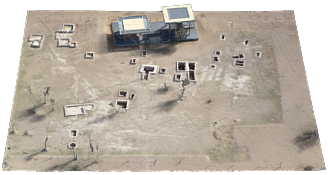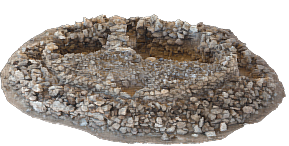Distance:
-
During the excavation carried out in 2020 in one of the houses of the Iron Age settlement of Thuqeibah the original mud flooring of one of the rooms was discovered, dated around 900 BC. On its surface, this pavement has preserved several dozen footprints of bare human feet, undoubtedly generated by the builders of the time. The anthropometric study of these footprints is of the utmost interest for the knowledge of the population of the place in the Iron Age, but given the difficult climatic conditions of the area, it could not be carried out without the help of an extremely precise 3D digital model. The excavation was carried out by a Spanish research team from the U.
BHS 62 is a circular Bronze Age (Hafit Period), above ground tomb. Investigations of this tomb resulted in the discovery of a minimal amount of skeletal fragments scattered inside the burial chamber.Citation: Jasim, Sabah Abboud ... Read More
The excavated area of the famous horse and camel tomb that is now reconstructed and on display in the Mleiha Archaeological Center in Mleiha, Sharjah. Pre-Islamic. Read More
Tomb III is very unique structure. The tomb’s large size is unusual for mortuary monuments of the early 3rd millennium B.C. The internal perimeter wall, at its preserved height of 1.4 meters, shows no evidence ... Read More



